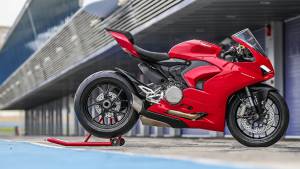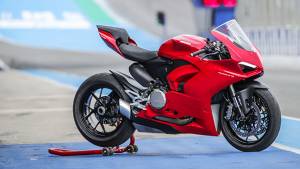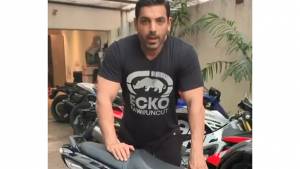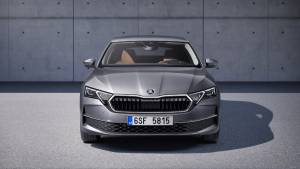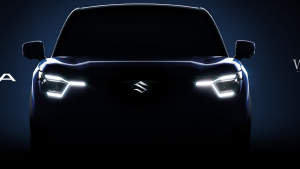Spec comparison: Ducati 959 Panigale vs MV Agusta F3 800 vs Triumph Daytona 675R
Sportsbikes represent one of the purest strains of motorcycling. That is a great thing as well as the reason why sportsbikes alienate so many riders so quickly. The bane is easy to explain. The nature of the beast requires a committed riding position that's painful and unrelenting in every situation except fast laps at a racetrack. Their nature and the steady upward creep of horsepower also mean that extracting the fearsome performance is stunningly illegal on anything but the racetrack and, let's face it, 90 per cent of buyers will never go to one â" and this is true not just for India. On the other hand, in the right environment, sportsbikes are seriously rewarding to ride well. A fast lap is a feeling few other activities can evoke, and the purity of the translation between rider's input and the motorcycle's response is unrivaled by practically every other kind of motorcycle.
For the longest time, the Rs 10.72 lakh Triumph Daytona 675 has been the entry-level multi-cylinder sportsbike. And Rs 1.45 lakh above that was the 675R model which gets better brakes, adjustable Ohlins suspension and a quickshifter. Both have ABS as standard. And above that was the long and wide gap to the litre-class motorcycles.
But the sportsbike market is changing. We have just tested the Ducati 959 Panigale and we are impressed. And the ferocious MV Agusta Brutale 800 will arrive later this year. Let's take a look at the new shape of the middle-weight sportsbike market.
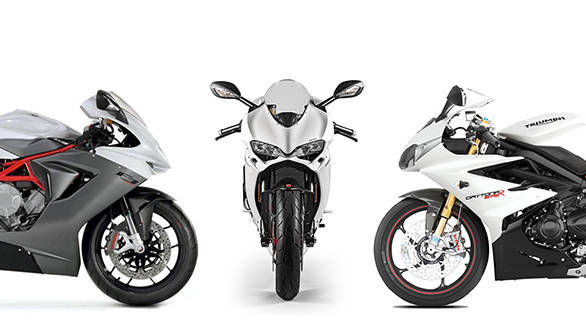
Engines
The biggest engine here, clearly, is the Ducati's 955cc L-twin. It makes the most power at 157PS as well as great torque at 107Nm. Notice also that the Ducati has the lowest peak torque and power points. This is underlined further by the highest power- and torque-to-weight ratios but the lowest specific output and compression ratios. In sum, the most powerful motorcycle here makes the most of its displacement and has the least hardworking engine of the trio. The scant 3kg weight gain over the F3 and 7kg over the Daytona shouldn't dent its performance in the least. We've only ridden the Ducati 959 Panigale at the racetrack, but the width and depth of the torque curve is unmistakable.
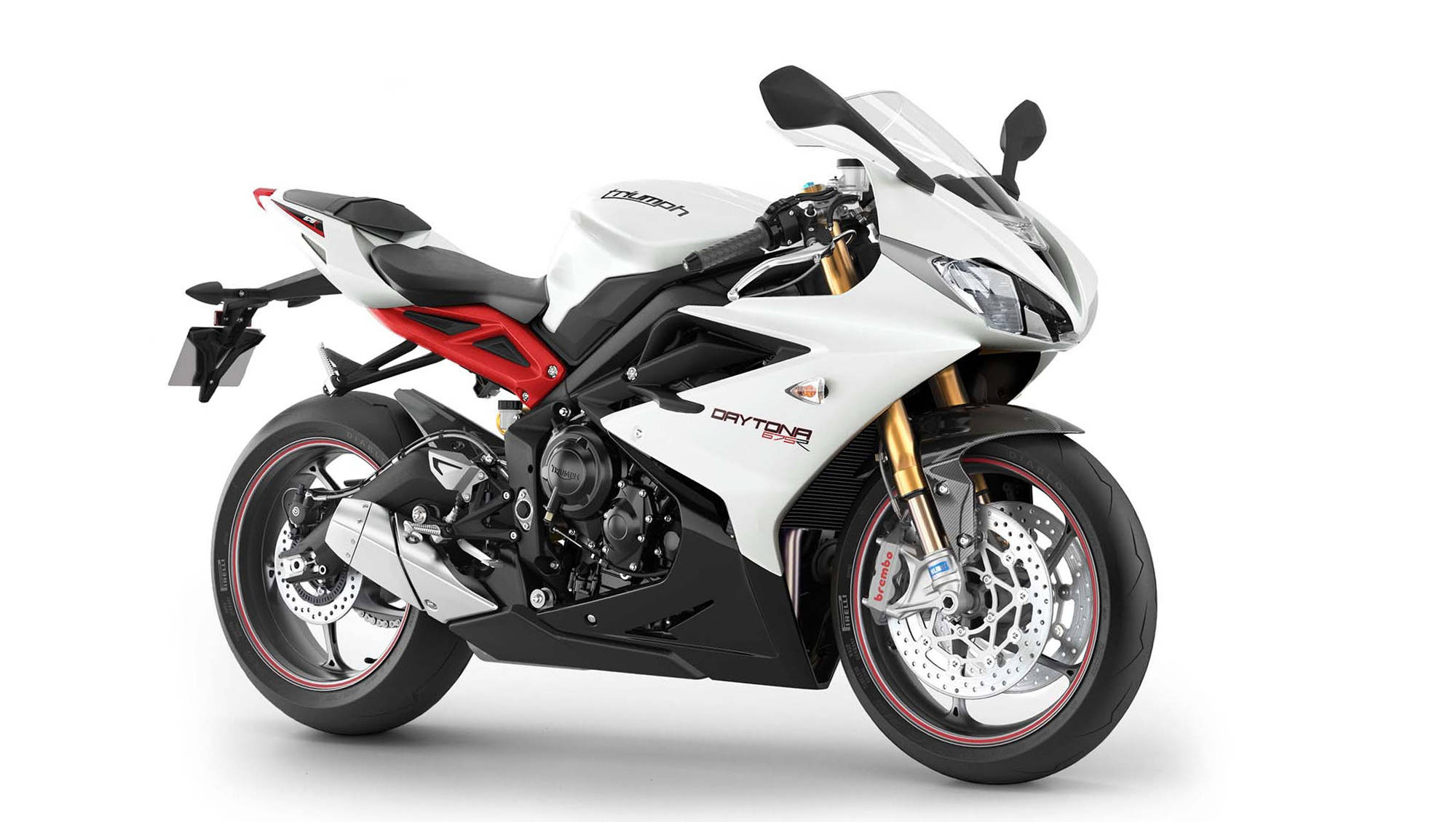
The Daytona is the other end of the spectrum. Its compression ratio is barely higher than the Ducati's, and it uses its relatively small 675cc triple to make 118.5PS and 70.2Nm â" good numbers on their own but the weakest here. It is the lightest motorcycle but not by a significant amount.
But the MV Agusta stands out. The MV triple displaces 798cc, about 125cc more than the Daytona but look at the power! MV extracts 150PS and 88Nm pushing the redline higher, and both peak power and torque points are notably higher than either of the other sportsbikes. Heck, the MV's peak torque comes 100rpm after the Ducati's peak power! The MV is also lighter and that should make it a thrilling, if frantic ride.
The advantage goes to both the Italian machines, thanks to the Triumph's age. The Daytona soldiers on with only minor updates, and the Italians boast the latest generation ABS and traction control electronics which make a huge difference to the riding experience.
Chassis
In physical size, the three machines aren't large. And they aren't very different from one another. The MV has a remarkably short 1,380mm wheelbase (that's just 15mm longer than the KTM 390 Duke!) while Ducati continues to favour its usually larger wheelbase. But all three, as middleweights, are expected to offer the range of ability that includes calming new riders and keeping advanced riders engaged. We have tested both the Daytona and the 959 on track, and we can confirm that both are friendly enough as you learn the art of riding and capable enough once you have the skill to use more and more of the ability on offer. The difference is in feel. The Ducati feels more direct and its narrowness promotes your sense of control over it.
More important from the street-use angle is the ergonomics. The Daytona feels more committed and that's harder on the wrists in slow going. The Ducati seems surprisingly comfortable in this regard â" one of the reasons why we believe Ducati's claim that the 959 is a road bike as well as a track weapon might actually be true.
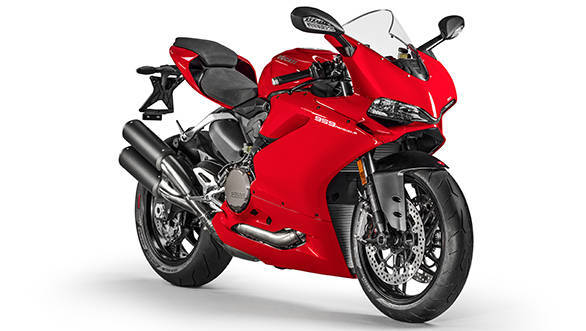
The MV Agusta F3 800 doesn't seem to play by these rules at all. Just like the engine, we expect the MV to be a highly strung, narrow focus sportsbike which means it will feel racebike alert and responsive on track but it will be that much more painful outside it.
Tyres
We have to bring up the tyres because while the MV and Ducati both come with Pirelli Diablo Rosso Corsas, the Daytona gets the SuperCorsas which is a stickier, softer compound. The Rosso Corsa is pretty good on the street, reasonable in the wet and excellent on the track. It manages to return about 8,000km in all-round use and doesn't collect punctures or cuts with careful riding. The SuperCorsa is an extraordinarily sticky tyre but wears out fast, and riding around normally will consume it in as little as 4,000km. Which means that once you wear out the first set, you will probably have to spend an extra Rs 35,000 odd on a new set of Rosso Corsas for your Daytona.
Electronics
The Daytona barely has any. Triumph is sequentially rolling out all-new models that fill the gap, and we believe the Street Triple line comes next, so the Daytona will have to wait its turn.
Being more recent models, comparatively, the Ducati and the MV Agusta come fully loaded. The nuance here is that the MV Agusta MVICS system is known to be unfriendly to operate â" something we hope the F3 800 gets a better version of. The Ducati system is only marginally less friendly than the best system of these in user-friendliness â" the Aprilia aPRC. The 959 is easy to set up and ride in terms of the electronics, and it offers the full suite, except for cornering ABS, launch control and electronic suspension control.
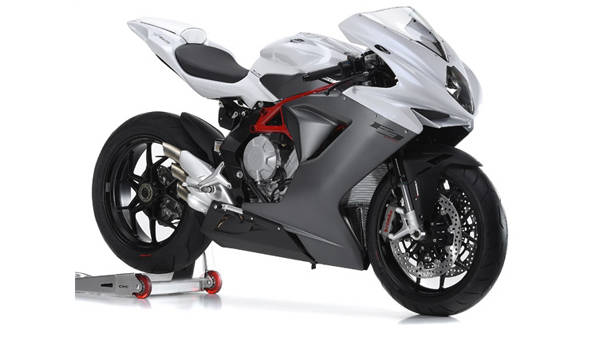
Living with them
MV Agusta is too new to be sure, but the Ducati living with experience suggests that the Italians machines are more trouble than the British which in turn are more trouble than the Japanese. This is not to suggest mechanical trouble, though. Reliability on all three should be similar though Triumph, and the Ducati's bigger scale should give them a slight advantage. The trouble comes from the cost of service and the price and availability of spares.
Triumph is pretty good with this. Service costs Rs 5,000-6,000 for the Daytona. Parts are usually in stock or ordered fair rapidly. We don't have official data on Ducati. We've asked but our empirical research suggests that service is more expensive, as much as double depending on the model. While running spares are easy to source, they are expensive. Worse, rarer spares need to be ordered and that can take a while, and this is likely to be the case with most CBU and CKD machines, so it's annoying but don't let it be the deterrent â" it's the rite of passage for the moment.
Also remember that sportsbikes attract attention like no other form of motorcycle. This is an important consideration. It means you cannot just up and take the bike everywhere. You do have to think ahead and consider finding secure parking where people are less likely to mess with your pride and joy. In some places and cases, carrying a nondescript bike cover might actually be a great, if inconvenient, idea.
What to buy?
On the face of it, the Ducati seems like the best deal of the trio but why jump the gun, eh? Let's wait for the road tests and comparison tests to sort the battle out in the right place â" the road and the racetrack.
A quick look at the spec-comparison of the above motorcycles:

Also read:
Everything you needed to know about the Ducati Riding Experience
